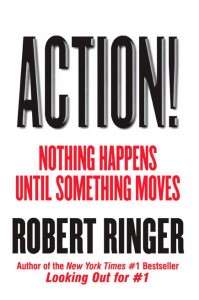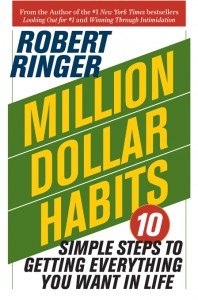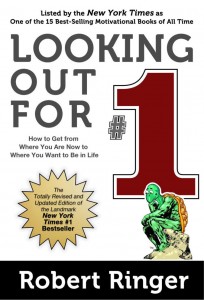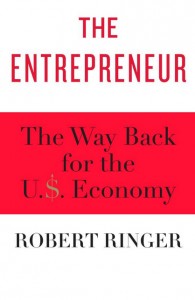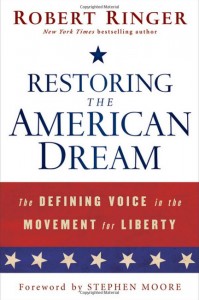The Efficacy of Downsizing
Posted on August 26, 2017 by Robert Ringer
With the United States on the verge of civil war, all half-way informed people realize that there are bad times on the horizon. I was writing about the probability of a runaway inflation and subsequent collapse of the foundations of Western civilization clear back in the late seventies, and I was far from alone in my views. Harry Browne, Jim Blanchard, Richard Russell, and many other “hard-money” newsletter writers shared similar views.
At the time, of course, establishment political types and the mainstream media dismissed all of us as doomsayers. When I did television shows, I always got the feeling that producers and hosts saw me as nothing more than an entertaining novelty — sort of like a Richard Simmons in a suit and tie.
They must have been thinking, “Isn’t he hysterical? The collapse of Western civilization? Puhleez. The next thing you know, he’ll be telling us that someday a Marxist will be elected president and try to fundamentally transform the United States of America. Har! Har! Now that would be a real knee-slapper, wouldn’t it.”
Which brings me to preparation for what’s coming. You already know about all the obvious things to do to prepare for the difficult times ahead, but an important one that you’ve probably never given much thought is downsizing. When it all hits the fan, the one thing you don’t need is to be weighted down by mountains of unnecessary “stuff.”
In business, I’ve thrown out tens of thousands of letters, contracts, and other documents over the years. And in my personal life, I’ve gotten rid of countless possessions, including, all too often, items I never even got around to using or looking at.
Nevertheless, I didn’t get really serious about downsizing and simplifying my life until Barack Obama was elected in 2008. That was a real wakeup call for me and millions of other Americans, and it’s when I knew I had to get really serious about downsizing.
When I say serious, I’m talking about “untouchables” — the yearbook from my senior year in high school … the very heavy printing plates from the first print run of my first book … hundreds of videotapes of programs I had taped ten, twenty, even thirty years earlier … suits I hadn’t worn in fifteen years, but always thought I would someday be able to fit into … scores of hardcover copies of my books … and much, much more.
As I threw out many items that I once considered to be sacred, it reminded me of a line from my favorite movie (actually, a miniseries), The Thorn Birds. The film centers around Drogheda, a large sheep station in the Australian outback, beginning in the 1920s. Drogheda is owned by an elderly and very wealthy widow, Mary Carson (played by Barbara Stanwyck).
In one dramatic scene, Mary is standing on the front porch of the main house at Drogheda with Father Ralph de Bricassart (Richard Chamberlain). She is hopelessly in love with the much younger priest, and, at one point, philosophically says to him, “You know, a hundred years from now, no one will even remember that any of us lived here at Drogheda.”
The reason it was such a poignant statement is because the Clearys (Cleary being Mary’s maiden name) were an important family in Australia, and the soap-opera-like, incestuous entanglements of the various family members at Drogheda were so alive and real to life that it was hard to imagine all of them not only being gone, but forgotten. It was a somber reminder to me of just how ephemeral life is.
I thought about Mary Carson’s comment as I was going through hundreds of souvenirs recently, many from as far back as when I was in elementary school. One example that really struck me was a large metal spike that I had shown my children many times over the years. At the age of ten, while playing football with the neighborhood kids, I was on the receiving end of a vicious tackle that totally severed my right femur.
As part of the ensuing surgical procedure, the doctor drilled a hole through my ankle and inserted a gigantic metal pin — in one side and out the other. I was laid up in the hospital for five weeks, with weighted pulleys attached to both sides of the pin holding my leg up in the air. For a young kid like me, it was pretty traumatic.
Along with tons of other junk souvenirs, I had kept that pin in one of my souvenir boxes for decades, because I still thought of it as a very big deal. But when Barbara Stanwyck made that famous statement in The Thorn Birds, it hit me that, in the overall scheme of things, it was not such a big deal after all.
I thought to myself, “Do you really believe that someday your children or grandchildren will look at that pin and say, ‘Wow! Just think, dad (or grandpa) once had that pin sticking out of both sides of his ankle?’”
Honesty compelled me to admit that I didn’t believe they would ever say or think any such thing, because it wasn’t a part of their lives. Life is like a cosmic blink of an eye, which is why, hard as it may be for us to accept, most of what we experience is not that important to anyone else. Even the most famous among us end up having much of their belongings auctioned off after they die.
Unless someone can come up with a viable solution for handling $200 trillion dollars in debt and unfunded liabilities, a soft landing for the U.S. economy is a fantasy. Runaway inflation? Possibly. A deflationary collapse? Possibly. Both? Possibly. The truth is, no one knows.
The only thing all honest, rational people (which eliminates most politicians, FNM folks, and progressives) can agree on is that $200 trillion in debt and unfunded liabilities is guaranteed to end badly. And when it does, you don’t want to be weighted down by yearbooks and surgical mementos.
That said, if you haven’t already done so, today is the best day to start seriously downsizing. There’s a good chance you’ll thank me for the nudge down the road.






